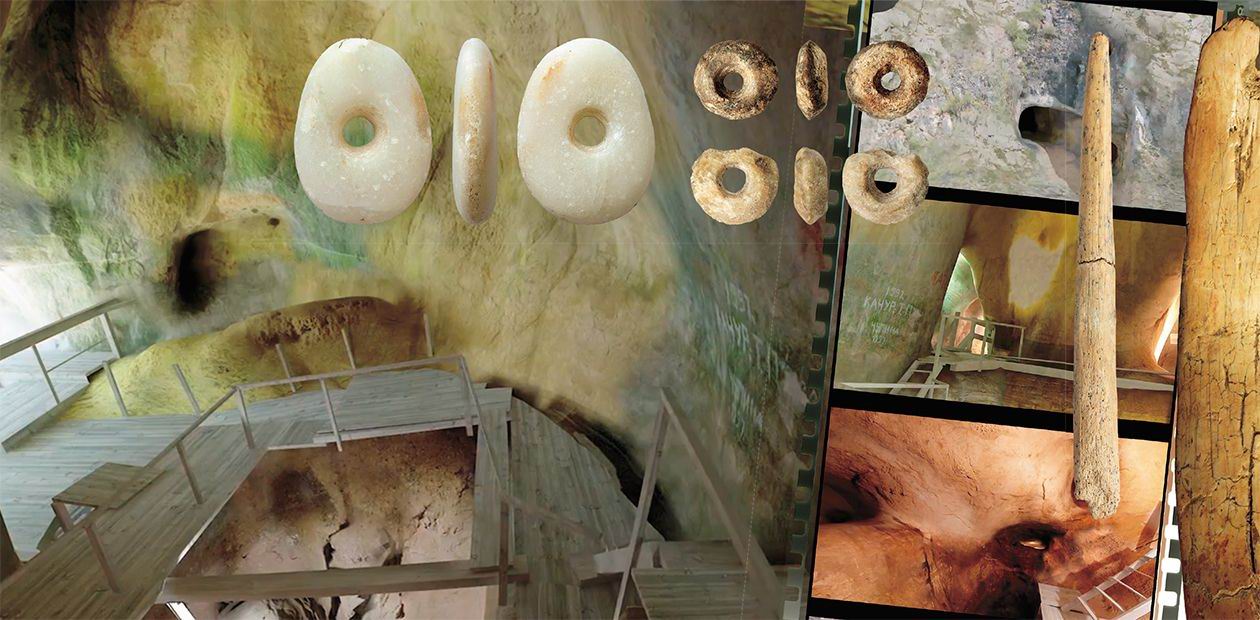Altai as the center of the ancient oecumene
Who are we? When, where and how did we appear? The origin of modern humanity, that is you and us, is currently a subject of concern to scholars and general public. This interest is being stirred up by the amazing discoveries made in the last few decades. An important contribution to these discoveries is the research carried out by the Institute of Archaeology and Ethnography, Siberian Branch, Russian Academy of Sciences. The geography of the Paleolithic monuments studied by Siberian archeologists is impressive: Siberia and adjacent countries, from Mongolia to Kirgizstan, Dagestan, Europe and Vietnam…And yet a gold mine of unique finds appears to be the Russian Altai. At the request of “SCIENCE First Hand” Academician A. P. Derevyanko told us about the multi-year studies of the Paleolithic in Altai, which have hit the headlines more than once
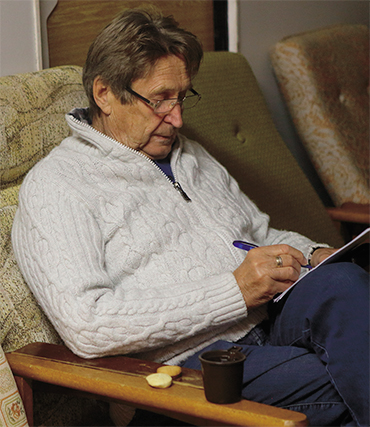 A topical issue of today’s archaeology and anthropology is how modern humans, with their genotype and anatomy, evolved. Until the 1970s‑1980s, there was quite a coherent hypothesis about our origin: from the Australopithecus to Neanderthals, who were the immediate ancestors of the present-day humans. This idea was strongly supported by the studies of our contemporaries’ genomes. In 1987, Science published an article that convincingly proved that modern humans were “born” in Africa, the same as Homo erectus, who left the “cradle of mankind” about 1,800,000 years ago for the vast expanses of Eurasia.
A topical issue of today’s archaeology and anthropology is how modern humans, with their genotype and anatomy, evolved. Until the 1970s‑1980s, there was quite a coherent hypothesis about our origin: from the Australopithecus to Neanderthals, who were the immediate ancestors of the present-day humans. This idea was strongly supported by the studies of our contemporaries’ genomes. In 1987, Science published an article that convincingly proved that modern humans were “born” in Africa, the same as Homo erectus, who left the “cradle of mankind” about 1,800,000 years ago for the vast expanses of Eurasia.
The African hypothesis sparked a lively discussion among the scholars engaged in human evolution, from anthropologists to geneticists, resulting in diverse opinions and new ideas, maybe not always well-thought-of. By the end of the last century, two major hypotheses domineered. The first maintained that present-day humans formed in Africa about 200,000 to 100,000 years ago, and 80,000 to 60,000 years ago their exodus to Eurasia started. Concerning the outcome of the last migration, views varied. Some believed that the newcomers destroyed or replaced the aboriginal population; others favored a more humanistic opinion, considering that the relations between the strangers and aborigines were complementary: acculturation and maybe even hybridization occurred.
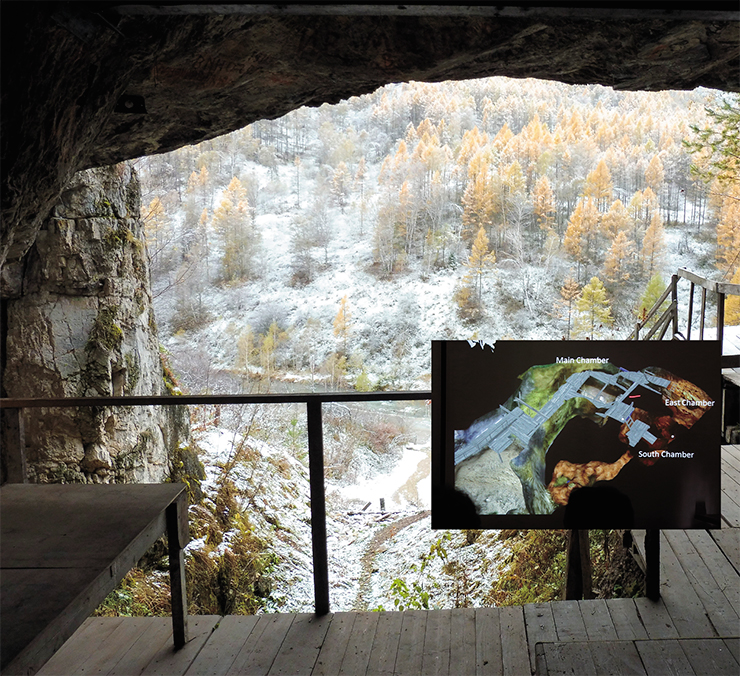
Bearing in mind that Karama is situated at 52 degrees north latitude, we can safely call it the northernmost site of that time. There is a similar site in England but owing to the Gulf Stream washing the shores the climatic conditions there are far more comfortable than here, in Siberia. This means that our direct though distant relative had sufficient cognitive abilities to adapt to the situation existing at that time in Pleistocene so far to the north
According to the second, multiregional, theory, the formation of the present-day humans took place not only in Africa but also throughout the areas inhabited by Homo erectus and subsequent human forms evolving because of natural selection and gene exchange between the populations.
These two seemingly alternative hypotheses used to be widely discussed at conferences and workshops, in books and articles… Today, however, our views on the history of humanity have changed dramatically. Among the major drivers of this change are the results of the investigations our research institute has been conducting in Gorny (Mountainous) Altai throughout the last few decades, primarily, in the Denisova Cave – a unique ancient site of North Asia. The fieldwork carried out there since 1983 has produced a number of discoveries (for example, the discovery of the remains of a previously unknown hominin, Homo sapiens altaiensis) that have allowed us to take a fresh look at the history of modern humanity.
Rewards of scientific cooperation
Today the words “Altai,” “Denisova Cave,” and Homo altaiensis are known worldwide, and not only to scientists involved in the study of human origin but also to journalists and a wide range of educated and curious people.
I became aware of it during my recent visit to the University of Hong Kong. When my interlocutors found out that I was directly involved in the Denisova Cave investigations, they started asking questions and even giving advice and recommendations. Some details that had never occurred in real life were mentioned. Rumor spreads, and the discovery of the Denisovan has a whole mythology around it.
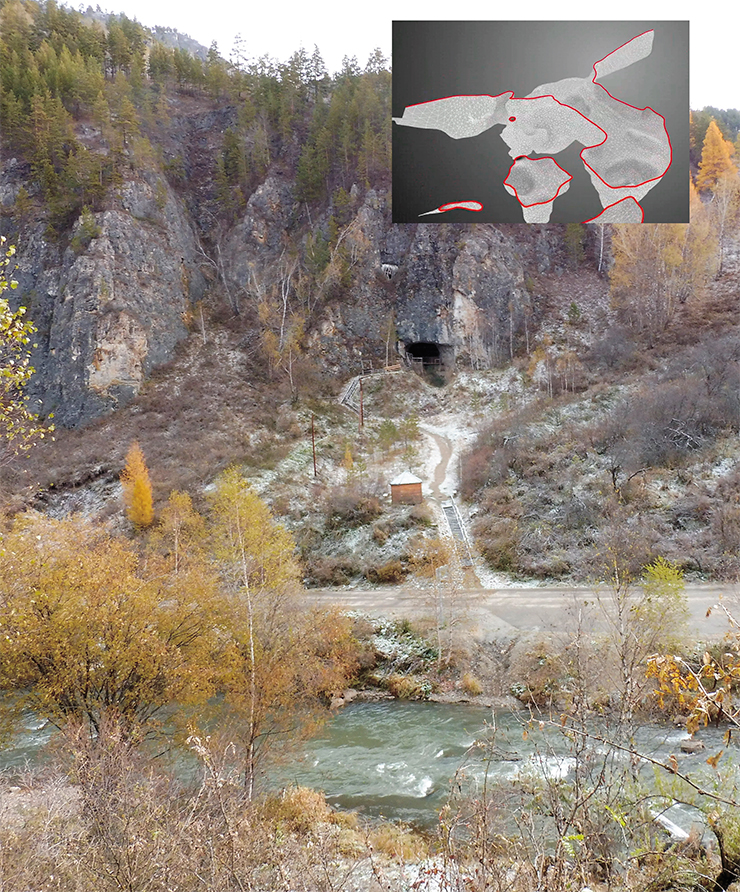
It is a good thing, of course, that our Denisova Cave has become so popular but we have carried out fieldwork in other nine caves and at eleven ground sites as well! The huge volume of materials collected enables us to track a long stage of human spiritual and material culture development. We work in close collaboration with a wide range of scientists, such as geologists, geomorphologists, geochronologists, paleontologists, anthropologists, and paleobotanists. This collaboration has allowed for quite a detailed reconstruction of the environmental and climatic conditions that existed in Altai dozens and hundreds of thousands of years ago.
One can hardly overestimate the importance of these data as at the time of Pleistocene the global climate was undergoing dramatic changes, which undoubtedly exerted great influence on the development of vegetation and wildlife. All this directly concerned humans as it affected their settlement patterns and technological progress. Suffice to say that 90,000 to 120,000 years ago Altai had a much milder climate than nowadays. The average temperatures, for example, were 5—6 degrees higher, which created a comfortable environment for broadleaves and other thermophilic plants.
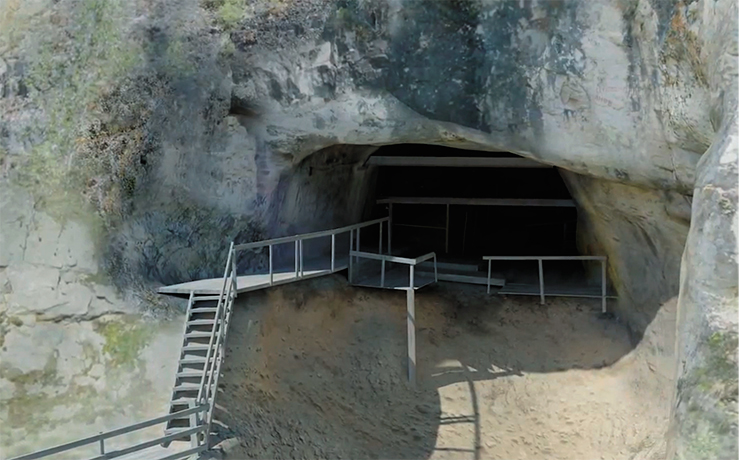
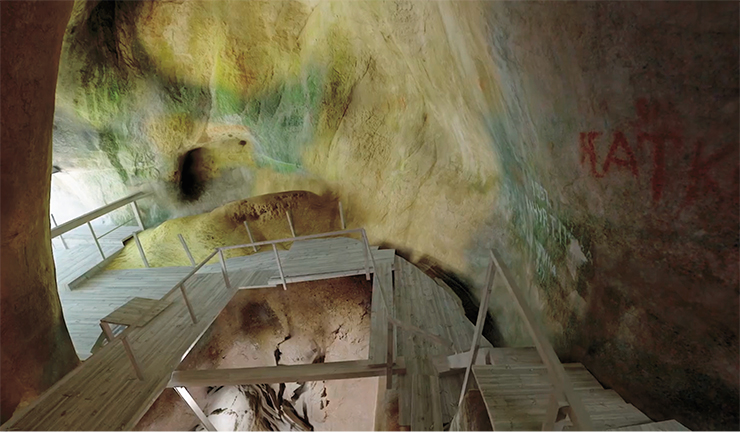
In the first eight or nine years of field work in the Denisova Cave and at other Paleolithic sites in Altai, innumerable artifacts were collected including stone and bone tools and decorations made using highly advanced technology. They all testified to the fact that 30,000—50,000 years ago this area was home to populations with a highly developed culture. We did not doubt at the time that all those findings belonged to anatomically modern humans. Therefore, the genetic analysis of a small fragment of the phalange of a human little finger (discovered in the 11 th layer of the Denisova Cave) performed in 2010 by Prof. Svante Pääbo’s paleogenetics laboratory, Max Planck Institute of Evolutionary Anthropology, Germany, came as a complete surprise.
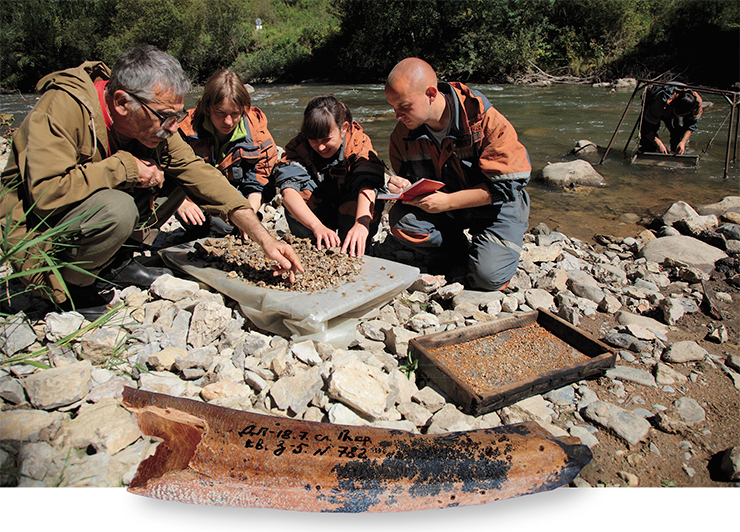
Importantly, though a field season here lasts at least three months and excavations have been carried out for a few years, not so much material has been produced out of the Denisova Cave. In contrast to regular extracting works, digging in this cave takes much longer as every gram of the extracted ground should be scrutinized and carefully examined – this is the only way to discover minute findings, such as bone fragments.
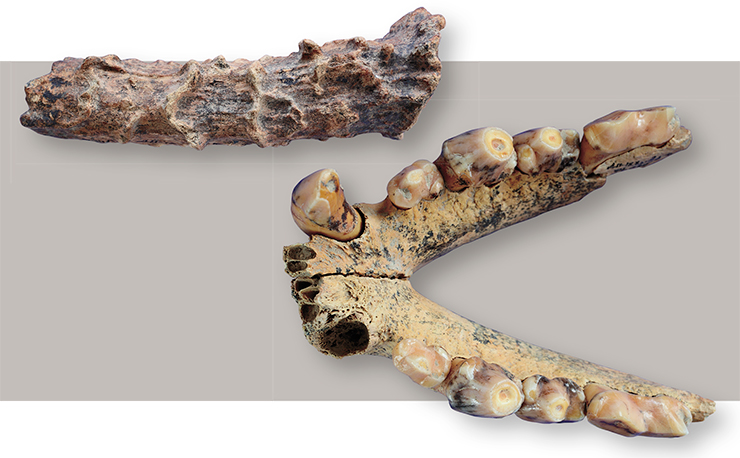
One must say these efforts have paid off handsomely. The decoded DNA obtained from a tiny bone fragment showed that the bone belonged neither to an anatomically modern human nor to a Neanderthal but to an entirely new population.
Apparently, this was the scoop of the century, followed by publications in the leading world scientific journals Nature and Science.
Four in one
As already mentioned, the Denisova Cave findings were instrumental in changing our views on the origin of present-day humans. On the one hand, these discoveries strengthened both hypotheses, monocentric and polycentric; on the other hand, they gave grounds to unite them.
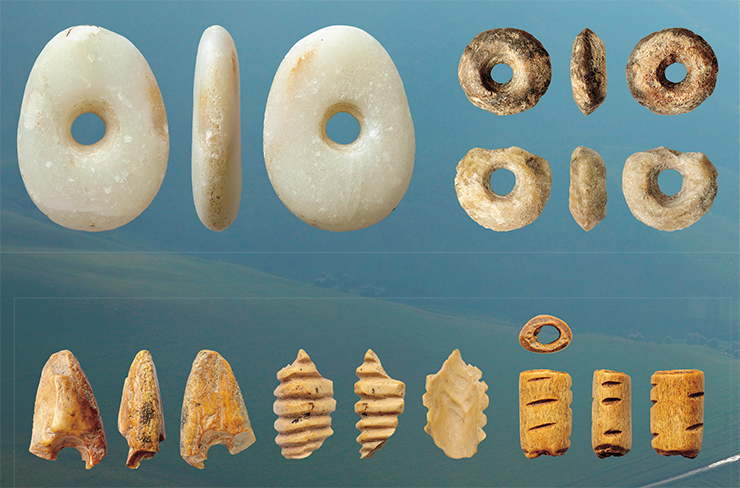
The level of this culture development is attested to by the discovery of stone needles (more than ten). One of them, virtually intact, found two years ago, is very thin and exquisitely made, which means that the ancient humans could make their clothes not only from pelts but from finely tanned skins of small animals. They could even have used plants: the Nanaians are known to have made high quality nets out of cannabis and nettle fiber as early as at the beginning of the Neolithic. This is how any archaeological finding can give us a lot of interesting information
To this effect, of great value is the decoding of the Neanderthal DNA from the remains discovered, among other sites, in the Denisova Cave. At first, this primitive man was deleted from our family tree because his genes were not found in the genome of the present-day people. Subsequently, however, Dr. Svante Pääbo’s research team managed to sequence the fossil Neanderthal DNA using more advanced techniques, which showed that modern non-African humans have about 2 % of Neanderthal genes. Is it much or little?
Recently, the DNA sequencing results of the remains of modern humans from Pestera cu Oase, Romania, were published. It turned out that the Neanderthal quotient of these people, who lived about 40,000 years ago, was over 9 %! It may have been even higher in the antecedent period. With time, naturally, the genome varied and some Neanderthal genes were lost. This shows that the Neanderthals were closely involved in the formation of present-day humans. The same is true of the Denisovans, whose quotient in the modern human populations of South-East Asia is 3—5 %.
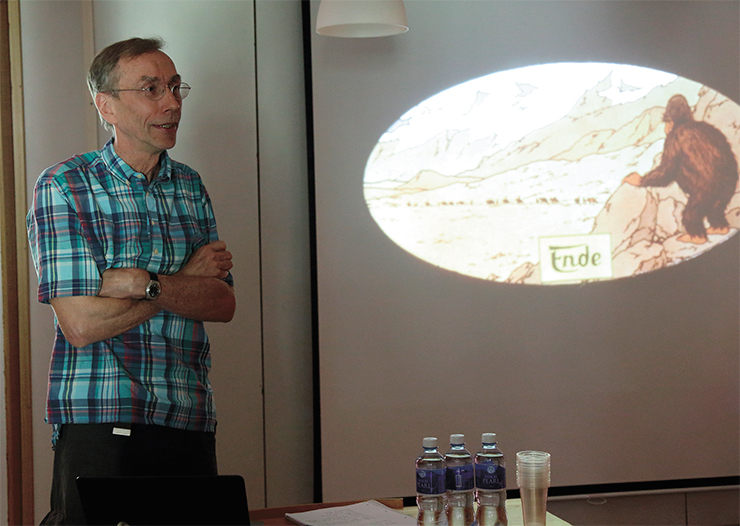
Basing on these data, we can say that the Neanderthals and Denisovans have common origin; they diverged about half a million years ago. Judging by the Denisovans’ genetic contribution to the humans of other groups, we can make a prudent assumption that the Denisovans were more numerous than the Neanderthals and that they represented a more interesting human population.
Supposedly, there were two (most probably, three) massive gene flows from the Denisovans to the modern human genome. The matter is that within the Denisovans two groups, very different genetically, can be distinguished. This perhaps explains why the modern Melanesian population has such a high share (4.8 % on average) of the Denisovan genome. Also, we know that Denisovans crossed not only with modern humans but also with the Neanderthals. I am quite confident though that in the former case the process was much more successful. Research into the genetic heritage of modern humans testifies to an important contribution made by the Denisovans, who passed on to us some very important and useful features, such as adaptation to living in harsh climate
In the light of this information, human evolution can hardly defined as linear. Without any doubt, another important contributor to our genome (in addition to the Neanderthal and Denisovan) is the hominin formed in East and South-East Asia, where we have evidence of a well-marked consistent development of stone industry. Though no fossils of this “Eastern hominin” have been found yet and his DNA has not been isolated, the tools discovered indicate that he must have come to northern China from Mongolia, most probably, from Mongolian Altai. I am confident that the future anthropological findings of this area will show Denisovan roots and the remains of this as yet unknown human subspecies will definitely be discovered both in China and in other East Asian regions.
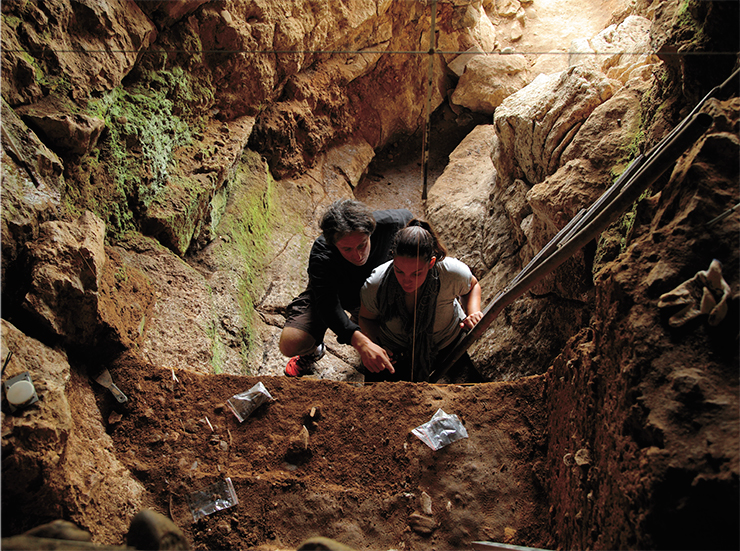
The hypothesis that Homo sapiens has evolved from four subspecies is being actively discussed. Surely, Africa remains the stem line of development. The early human populations left it to settle all over the vast territory of Eurasia. Eventually, about 50,000 to 30,000 years ago, migration and gene exchange between different populations resulted in the birth of you and me.
Denisova Cave as an international lab
Today we are in a new phase of diggings inside the Denisova Cave and research into the Altai Paleolithic on the whole. In summer 2018, it was the venue of the second symposium dedicated to the transition from the Middle to Upper Paleolithic. We discussed, among other things, the new data resulting from the studies of the materials extracted from the cave. The participants were scientists from about ten countries, though our aim was not to encourage greater participation but to get together all the leading experts working on the issue.
ACADEMICIAN A. P. DEREVYANKO. FROM THE DISCUSSION AT THE INTERNATIONAL SYMPOSIUM. GORNY ALTAY, JULY 2018Archaeologists have no clear definition of the Upper Paleolithic, the same as anthropologists have no clear definition of the “anatomically modern human.” The Middle East gives us many examples of the constant mixing between the Middle Paleolithic and Late Paleolithic cultural traditions, which could be the consequence of changing ecological conditions. In the time interval of 60,000-40,000 years ago preceding the last Ice Age, the climate, as always, was undergoing changes related to long-term and medium-term climatic fluctuations, when warmer periods replaced colder periods and vice versa.
In the Denisova Cave deposits, tool shapes characteristic of the Upper Paleolithic appear in the layers dating to about 100,000 years old, and their number increases as we go up. In the 12 th layer they make up a significant percentage of all the stone tools found. In the “younger” 11 th layer (50,000–40,000 years) the Upper Paleolithic set prevails. It is there that a large number of decorations and stone artifacts is found, which allows us to identify this layer as Upper Paleolithic. Among them is such an important artifact as stone needles, which testifies that the Denisovans could make clothes. The unique ornaments – a stone ring and chloritholite bracelet showing traces of grinding and polishing – prove that man had mastered these techniques much earlier than it was believed
In the three years that passed after the previous meeting we have managed to do a lot. Firstly, we have obtained a long series of exact datings, which is imperative to support any hypothesis related to ancient humans. In order to prove or deny something, you need to know the exact chronological frames of the events in question. Today, with the help of our colleagues from Europe and Australia, we have obtained over a hundred of such indisputable datings for the cave, which agree nicely with one another.
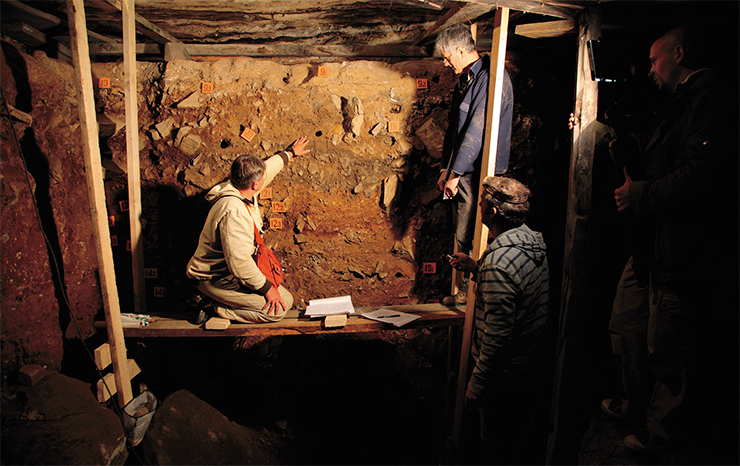
Secondly and most importantly, the genome of the bone fragment called “Denisova-11” has been deciphered. This ancient hominin has turned out to be a hybrid of two primitive individuals. The sequenced DNA shows that the parents were a Denisovan (father) and a Neanderthal (mother). Moreover, the Denisovan father had at least one Neanderthal ancestor a few generations ago.
Today, paleogeneticists have learnt how to extract ancient DNA directly from cave deposits. Though this technology needs improvement, it offers a unique material to archaeologists and anthropologists.This approach has helped us to discover the Denisovan DNA in the 15th layer of the Denisova Cave East gallery, dating to over 200,000 years ago. As we know, some (not many) anthropological bone fossils were found in more recent layers, too. When the DNA extracted from them was sequenced, it turned out that most of them belonged to the Denisovans and some of them to the Neanderthals.
In addition, the Neanderthal DNA was extracted from the 14 th layer deposits dating to 190,000–200,000 years ago. This is the most startling revelation because during this chronological period no “trace” of Neanderthals has been found either in the Middle East, or Middle Asia or Caucasus – they were yet in the stage of formation. This is food for thought …
These sensational data have testified, once again, that there was continual gene exchange among ancient populations living in different areas. In other words, they crossed and crossed successfully as they produced fertile offspring, which can only be possible in the event of subspecies, not species.
These discoveries made in the Denisova Cave prompted, a few years ago, a new hypothesis of human genesis involving different human subspecies. Underlying it was an array of interesting facts concerning the Denisova Cave, the cave that is truly unique as anthropological findings dating to the same epoch and related to both Neanderthals and Denisovans are found there.
Interestingly, in the cave deposits we can trace in detail the Denisovan stone industry evolution but see no signs of the Neanderthal presence though Neanderthal stone tools are well represented in the Okladnikova and Chagyrskaya caves, also situated in Gorny Alta, i. e., virtually in the same area. Our researchers have been digging in these caves for many years and we know that the Neanderthal tools differ a lot from those made by Denisovans.
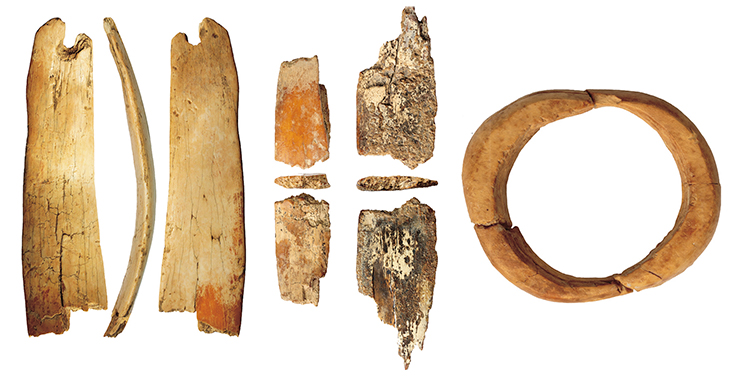
How could the remains of two groups of ancient people be found in the cave deposits simultaneously? Only two explanations are possible. First, cannibalism resulting from antagonistic relations between the Denisovans and Neanderthals. Second, crossing, or intermarriages, between them. These contacts must have been casual and short-term because Denisovans did not replicate any of the Neanderthals’ stone carving techniques.
Archaeologists have not discovered any Neanderthal artifacts in the Denisova Cave, just Denisovan. However, they are abundant in two other caves in Altay: Okladnikova and Chagyrskaya. Most of the stone tools found there are very different from the Denisovan tools: Neanderthals used predominantly the bilateral stone working technique while the Denisovans preferred the blade technique.Even though the Denisovans and Neanderthals inhabited adjacent areas and sometimes even shared them, and must have met regularly, they demonstrate strong commitment to their own tool-making traditions. Probably, their tool kits were equally well fit to the environment. Only in the lower layer of the Okladnikov Cave (dating to 44,000–45,000 years) inhabited by the Neanderthals, some blade tools and cores for cleaving plates were found
In fact, Neanderthals never stayed in the Denisova cave for long. They could have come across during hunting or foraging since they inhabited adjacent areas, were kind of neighbors. And these peaceful meetings between the Neanderthals and Denisovans are now an established fact, which is amazing, especially if you bear in mind that these episodes of human history are dozens of thousands years away from us.
When I am abroad, I am often asked why such a highly developed culture as Denisovan would come into being at the very edge of the ancient oecumene.
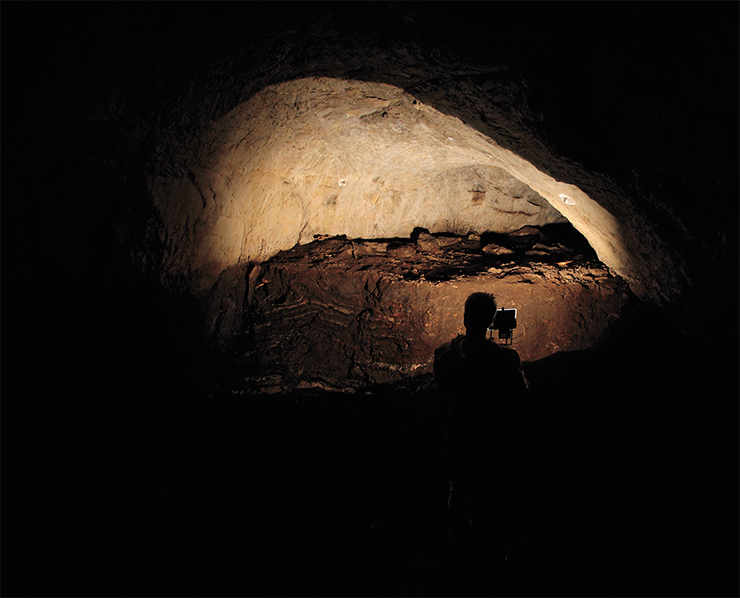
The matter is that for many people Siberia is a land of eternal cold, especially when you think about glaciers and Pleistocene. In fact, the glaciers were found a long way from here, in the north, while Altai had no inland ice apart from the glaciers high in the mountains. In tropics and subtropics people could survive on vegetation throughout the year. In Altai, however, even during the most comfortable periods, humans could feed on plants only in the summer and had to hunt throughout the rest of the year. Hunting implies collectivity, hence the need for better communication skills, transfer of stone working technologies and hunting techniques. All this contributed to the development of cognitive abilities of ancient man. Not surprisingly, such a bright culture formed here rather than elsewhere.
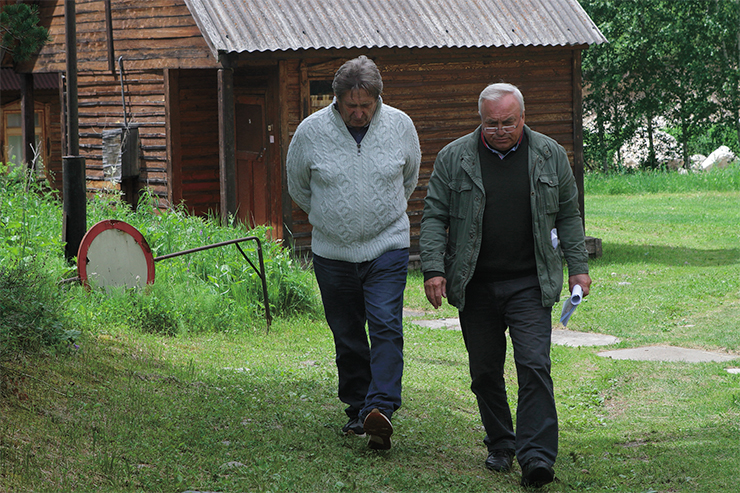
The fact that Denisovans lived at the edge of the inhabited world played an important role, too. The Far East, for example, was at the time a true “public thoroughfare”: constant migrations, population replacement, etc. This might be good for gene exchange but not that good for shaping an indigenous culture.
Another important question with no single answer: What happened to the Denisovans whose story is “written down” in the multiple layers of cave deposits?
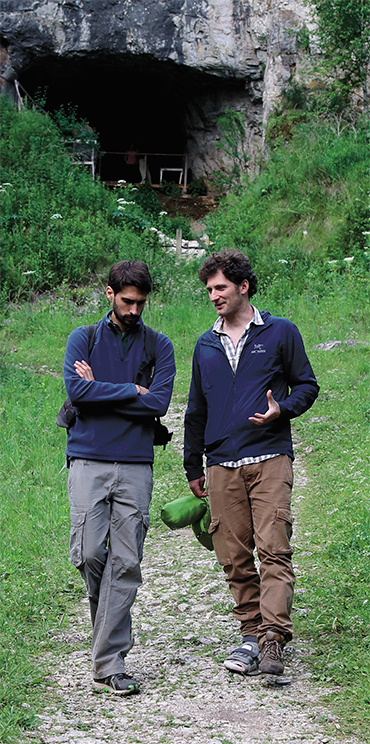 I can only say that the Denisovan industry can be traced in the cave starting from the layer 300,000 years old. The remains of the Neanderthal-Denisovan hybrid were discovered in the 130,000—140,000-year-old layer. The age of the uppermost 9th layer of cave deposits, where the Denisovan artefacts were found, is approximately 35,000—30,000 years old.
I can only say that the Denisovan industry can be traced in the cave starting from the layer 300,000 years old. The remains of the Neanderthal-Denisovan hybrid were discovered in the 130,000—140,000-year-old layer. The age of the uppermost 9th layer of cave deposits, where the Denisovan artefacts were found, is approximately 35,000—30,000 years old.
It is known that if a new human population comes to an area, it usually brings its own technologies including its own stone treatment techniques. The more so if this is a more “advanced” human of the modern type. Yet, neither in the Denisova Cave, not anywhere in South Siberia, in Altai, have we discovered a more developed stone industry or a radical change in stone treatment techniques.
The same Denisovan stone industry existed in the Anui River valley, which is close to the Denisova Cave and where sites dating 30,000—25,000 years old were found. The same is true of the Karakol, a tributary of the Anui, where we have found traces of human presence aged 30,000 and 25,000 years old. The only sign of a present-day human (based on sequenced DNA) was discovered in Ishim, Tyumen Oblast – a femur fragment aged about 45,000 ya.
To sum up, nobody (us neither) can say what happened to the Denisovans, who created this well-developed culture, and when the so-called present-day people came here. In the uppermost, 9th layer of cave deposits bone remains have been found but they have not been identified yet.
Work continues. Recently, we have started digging in the Southern gallery of the Denisova Cave, which looks very promising. In about ten meters, the gallery narrows sharply and extends further. Who knows what might be in store for us there?
3D-digital model of the Denisova cave and findings discovered in it was made. 3D-presentation by the Trimetary Consulting (St Petersburg)
References
Buzhilova A., Derevianko A., Shunkov M. The Northern Dispersal Route: Bioarchaeological Data from the Late Pleistocene of Altai, Siberia // Current Anthropology. 2017. V. 58. N. S17. P. S491–S503.
Derevianko A. P., Shunkov M. V. Where has Homo sapiens come from? // SCIENCE First Hand. 2016. V. 43. N. 1. P. 40–59.
Mednikova M. B., Shunkov M. V., Markin S. V. Robusticity of Hand Phalanges: Relevance to the Origin of the Altai Neanderthals // Archaeology, Ethnology & Anthropology of Eurasia. 2017. V. 45. N. 3. P. 126–135.
Pääbo S. In search of the lost genomes // SCIENCE First Hand. 2018. V. 49. N. 2. P. 16–31.
Shunkov M. V. The Denisova Cave – everything changes, but nothing disappears // SCIENCE First Hand. 2018. V. 49. N. 2. P. 68–87.
Slon V., Hopfe C., Weib C. L. et al. Neandertal and Denisovan DNA from Pleistocene sediments // Science. 2017. V. 356. N. 6338. P. 605–608.
Slon V., Mafessoni F., Vernot B. et al. The genome of the offspring of a Neandertal mother and a Denisovan father // Nature. 2018. V. 561. N. 7721. P. 113–116.
The editors thank Maxim B. Kozlikin (Candidate of History, Institute of Archaeology and Ethnography, SB RAS, Novosibirsk) for his help with the publication


